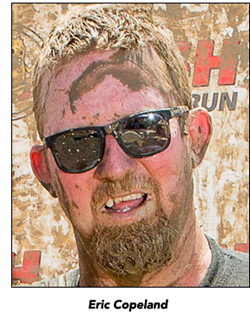

Operational safety enhanced for ITD workers
![]()
About 14 months ago, I encountered three Transportation Techs parked on the right shoulder of Interstate 84 at around 10 a.m. in the Boise vicinity, attempting to patch potholes in the left lane. The speed limit was 65 mph and the traffic was moderately heavy (this section of road averages about 100,000 cars a day). They were taking unreasonable chances, and it scared me pretty badly. Operational safety was taking a backseat, and that can never  happen.
happen.
Little did I know that in my mind that day, safety standards were being set that created the backbone for a VSDO (Very Short Duration Opetation).
Back to the crew: they were parked over a slight rise in the road and on the inside of a corner. Their traffic control consisted of the flashing light on their one-ton truck. Their method of operation was to wait for a gap in traffic, run out into the road, dump a bag of mix in the pothole then run like heck for the right shoulder before they were squished by traffic (splash & dash).
The patching crew was invisible to drivers in the left lane when there was truck traffic in the right lane, until the traffic was inside of about 300 feet of the operation (I know this because I was in the left lane beside a truck when I saw them). I watched them come pretty close to being hit.
I turned around at the next interchange and headed back to talk to them about what they were doing and to see if we could come up with a less risky way to complete their task.
As I came back I saw two semis stopped in the interstate right where our folks were working (of course I assumed the worst; (squished worker under a truck). It turned out that the truck driver in the left lane had braked hard when he saw our folks in the road and his dog jumped out of his truck. The truck in the right lane stopped to keep from running the dog over. Luckily, there were no secondary accidents behind the trucks and no one was injured (including the dog).
When I got back to them, we discussed their procedures. I discovered that they were all pretty new employees and from their perspectives the risk seemed acceptable. They had a spotter who stayed on the right shoulder and warned them when vehicles were getting close, and this was the way the “old timers” did it. I asked them to pull off the road until we could come up with a safer procedure for filling the potholes (night work was ultimately determined to be the best option for this section of road).
This incident got me thinking about very short term operations on the roadway; there are a lot of times that a flashing light on a truck is more than enough warning for the motoring public, but there are times that it’s not even close to enough. How do you decide what’s needed and when you need to just step back and go get more traffic control devices or ask for help?
I took my concerns to my District Engineer (Amy Revis) and our Chief Operations Officer (Travis McGrath). After meeting with them, I was asked to form a TIGER team to research the problem, see what other states had done to mitigate the problem and see if we could develop a solution that could work for ITD. (I would like to thank Eric Staats, Mike Ahlers, Lori Fox, Allen Knight, Eric Nelson, Jared Loosli, Jeremy Wood, Mike Stowell & Mike Garz for their help. This wouldn’t have happened without their ideas & input).
Over the past year or so, ITD’s version of a Very Short Duration Operation (VSDO) has been developed and has been added to the ITD Operations Manual (or will be soon). We’ve developed quick cards and posters to help communicate our message (point of clarification: when I say we developed I mean Alicia Harry developed. Alicia, you rock!)
So, now you’re asking yourself; what in the world is a Very Short Duration Operation (VSDO)?
A VSDO is an unplanned or urgent activity, to be executed in 15 minutes or less by a crew of at least one worker and one truck, in which the hazard of not executing the work as a very short duration operation is greater than executing it.
Possible operations for VSDO consideration could include, but are not limited to, pothole patching, debris removal, dead animal removal and the like.
Factors that could affect your decision to proceed (or not to proceed) with a VSDO are:
- Traffic volume and speed
- Time of day
- Type of road (two-lane undivided, multilane undivided, multilane divided
- Weather conditions (clear, rain, fog, snow)
- Severity of risk (to the public and workers)
- Vision-blocking objects
- Location of work (in the traveled way, on shoulder, beyond shoulder, in median)
- Roadway geometry (hills, curves, straight, flat, intersections)
As the traffic speed goes up and/or the volume increases, the risks of performing an activity in the right of way goes up. There is going to be a threshold past which more traditional traffic- control methods will be required."
Please remember that: Safety Cannot be compromised for the sake of getting the job done.
Please visit our SharePoint site for the Decision Flow Chart & Risk Assessment poster.
Published 07-27-18